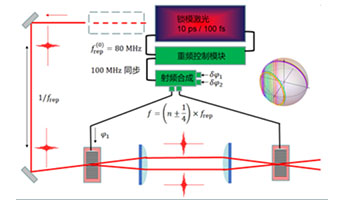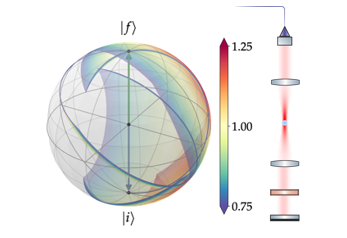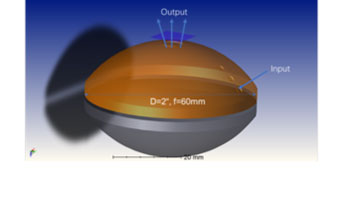
Through eyes or camera, the world is observed by people with light intensity measurements. Microscopically, this means photons with certain frequencies and propagation modes are counted electronically. Charge-transfers are induced during the process to record the intensity profile of the optical modes. The phase information are lost...

For dielectrics, optical phenomena are typically understood as following: Light drive a polarization field P=\chi E. The coherent coupling between E and P is described by the macroscopic Maxwell equations. However, the polarizability \chi stems from quantized electric motion in matter. A more accurate description thus replaces the constitutive relation about \chi with equations that describe the interacting electric dipoles. By this step, a prohibitively difficult problem emerges...

From a quantum control perspective (e.g. PRX 6, 041067), control of cold atoms with light becomes easier when optical pulses are shapeable arbitrarily. The waveform bandwidth is limited by the modulator and seed light. Regular modulators (flip mirrors, AOM, EOM) support waveforms up to tens of MHz. Tailoring spectro-phases of mode-locked lasers leads to THz-resolution pulses. To fill the 100MHz-THz gap is still an outstanding challenge today for the advance of new quantum optical technology...

Hamilton's principle is mysterious: it says when particle travels, it automatically chooses a path with stable action S. The quantum mechanical origin of the mystery is decoded by Feynman, who suggests that the particle actually samples all possible paths, each weighted by a factor \propto e^{iS/\hbar}. The classical path emerges since it survives the phase average. Sometime the classical path is not unique...

A central quest in nanophotonics is for optical confinement to enhance the strength of light-matter interaction. The enhancement impacts spectroscopy, nonlinear optics, and lasering in fundamental ways. Furthermore, by interfacing the confined photons with atoms, single-photon-level nonlinearity may leads to intriguing many-body effects in the confined geometry. This 2nd scenario requires ultra-precise atomic state control in the near field...

This is likely the most difficult project in our lab since it involves something none of us understand (quantum chaos). Our previous efforts include using the speckles from the cavity to measure optical wavelength, with limited success. But some of us are still extremely enthusiatic about the possibilities...
Tel.: 021-31242239
All content © FUDAN. All Rights Reserved.